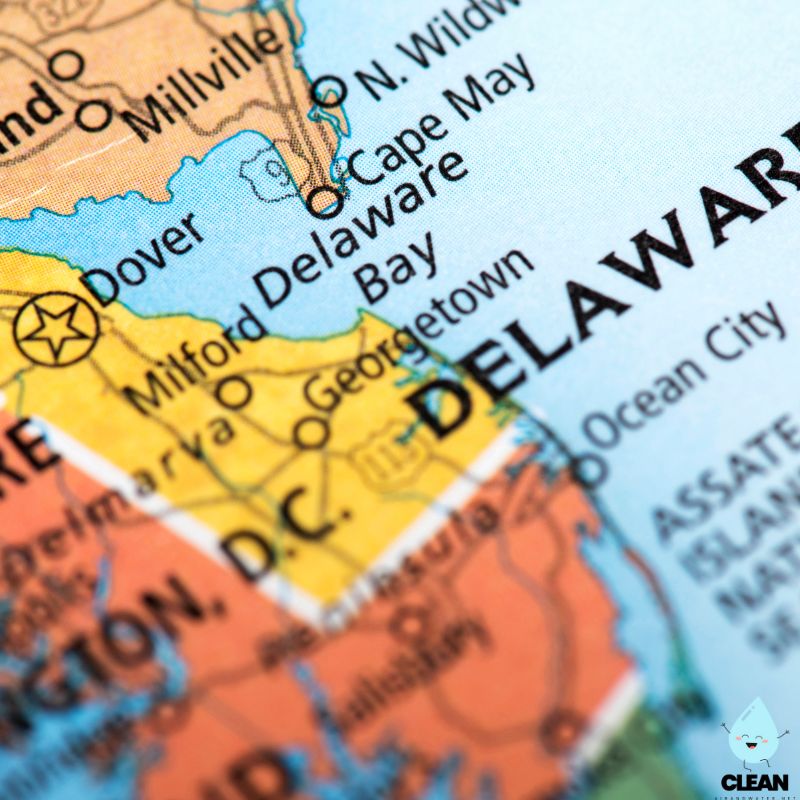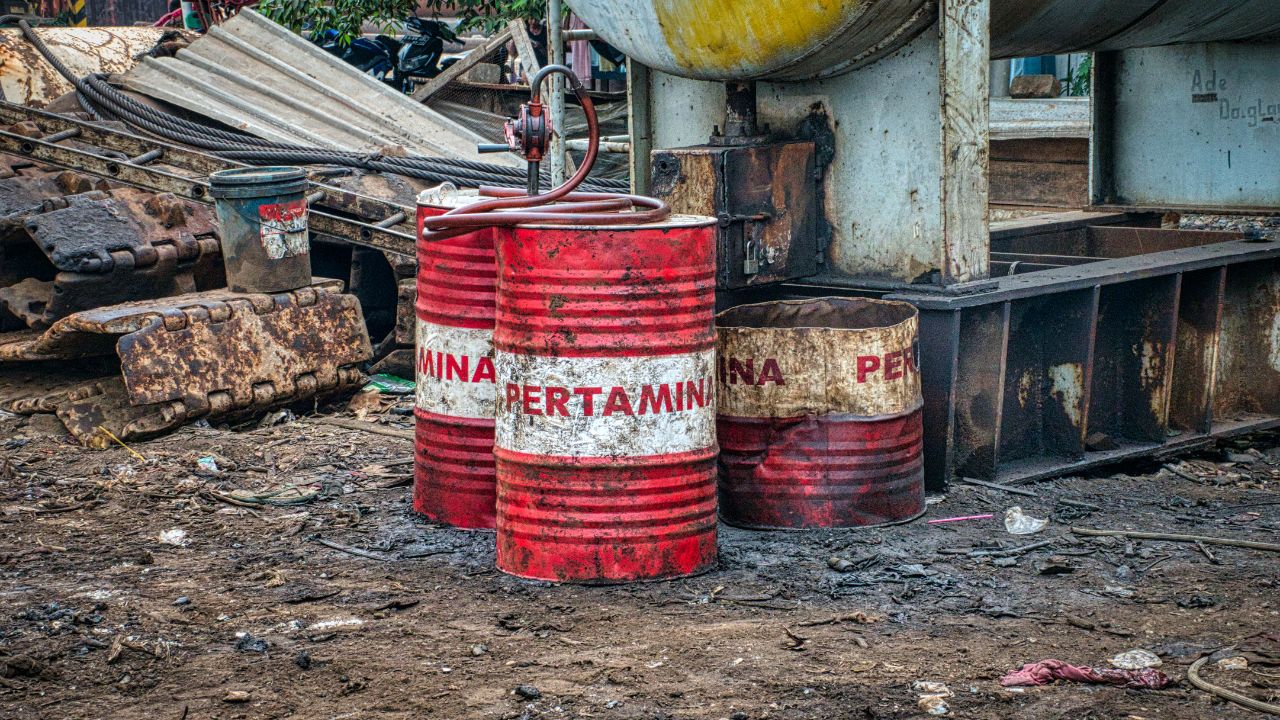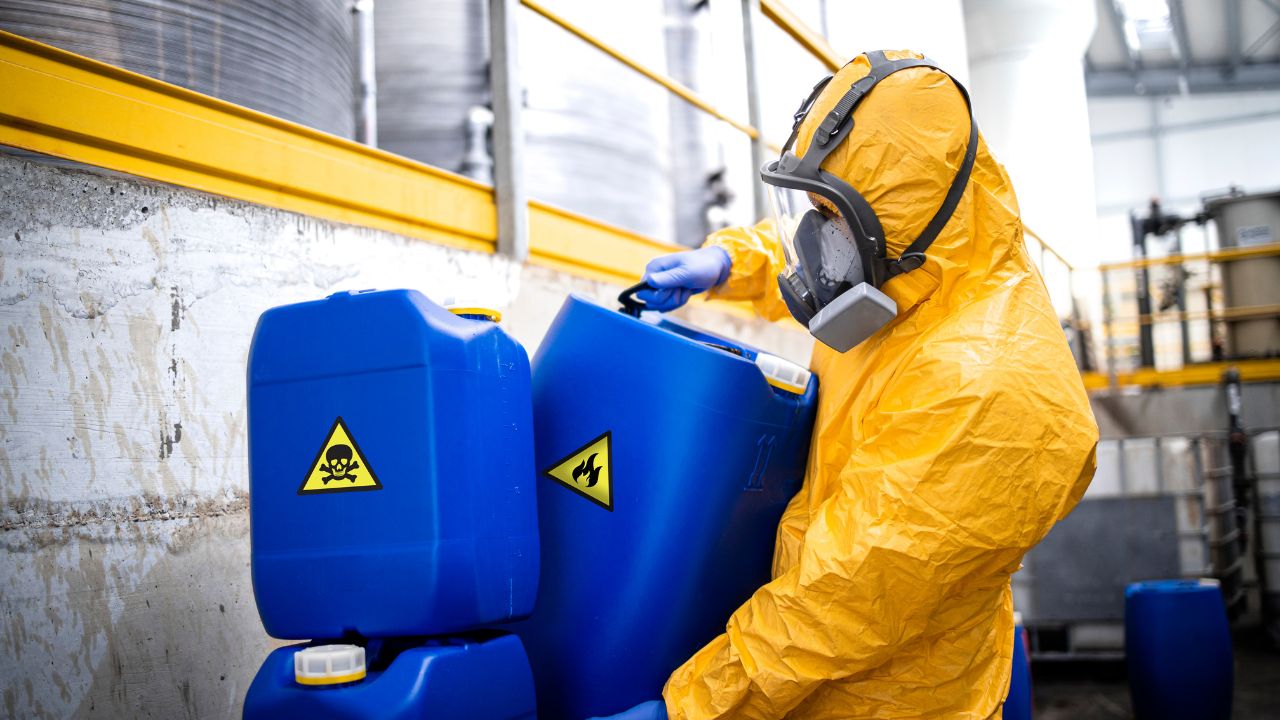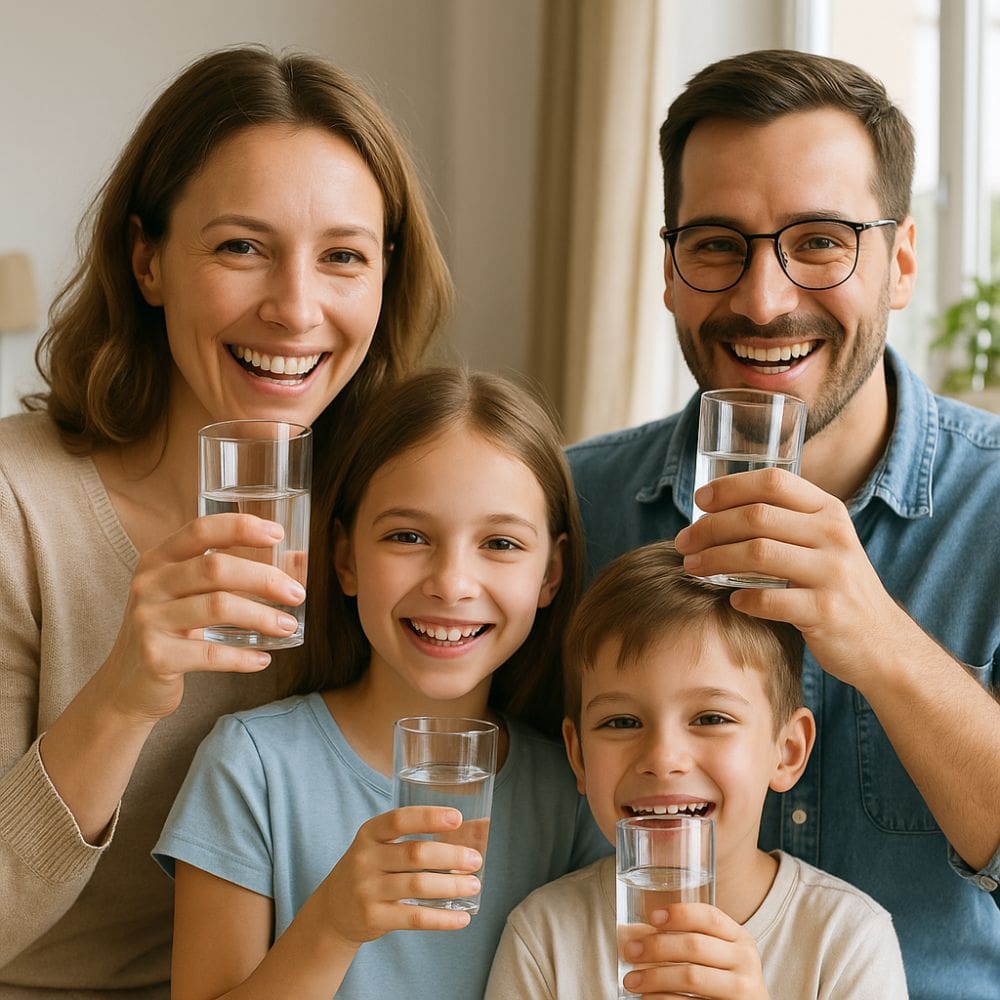Delaware Water Quality at a Glance
some concerns
Is Delaware Water Safe to Drink?
Generally Yes – Delaware has relatively good water quality with only 6% of public water systems containing PFAS (compared to national averages). However, 200,000 residents rely on unregulated private wells, and areas near New Castle Air National Guard Base have elevated PFAS from historical firefighting foam use. Disinfection byproducts and chromium-6 detected in major cities like Wilmington and Dover.
⚠️ Key Concerns for Delaware Residents
- Private Wells: 200,000 people (1/5 of population) rely on unregulated private wells that may contain PFAS
- Military Base Impact: New Castle Air National Guard Base area has elevated PFAS from firefighting foam – some residents have 9.8x higher blood levels
- Surface Water Contamination: Red Clay Creek (Stanton area drinking source) detected PFAS up to 135 parts per trillion
- Disinfection Byproducts: Haloacetic acids and trihalomethanes in Wilmington and Dover increasing cancer risk
- Chromium-6: Cancer-causing hexavalent chromium detected in major cities
Read the full report below for detailed analysis, city-specific data, and actionable recommendations for Delaware residents.
Delaware – The First State – Water Quality Report 2025: PFAS Testing, Infrastructure Concerns & Safety across your state
Delaware’s water infrastructure serves approximately 1 million residents across three counties, from Wilmington’s urban center to the rural communities of Kent and Sussex counties. The state operates through a network of public water systems including major utilities like Artesian Water Company serving approximately 300,000 customers across all three counties, and smaller systems like New Castle Municipal Services Commission serving about 2,200 residents. Delaware’s water sources primarily include the Delaware River, Brandywine Creek, and the Columbia aquifer system, which supplies groundwater to more than 90% of the state’s population.
Despite its small size, Delaware faces water quality challenges, particularly related to PFAS contamination around military installations and aging infrastructure. The state has been proactive in PFAS monitoring and regulation, with comprehensive testing revealing that only 6% of 3,172 samples from 2023-2024 contained detectable PFAS, with 2.5% exceeding health advisory levels. Delaware has received federal infrastructure investments from the Biden-Harris Administration’s Bipartisan Infrastructure Law to address these challenges, focusing on drinking water safety, PFAS treatment, and emerging contaminant removal. The state’s proactive approach to water quality management, led by the Delaware Department of Natural Resources and Environmental Control (DNREC) and Division of Public Health (DPH), demonstrates commitment to ensuring safe, reliable water access for all residents while addressing contamination challenges from sources like the New Castle Air National Guard Base.

Delaware Water Quality: Current Status (2024-2025)
Statewide Compliance and Testing
- Overall Compliance: The majority of Delaware’s public water systems meet federal Safe Drinking Water Act standards, with EPA data from 2023-2024 showing only 6% of 3,172 samples containing detectable PFAS chemicals and just 2.5% exceeding health-protective levels – significantly better than national averages.
- PFAS Monitoring Leadership: Delaware has emerged as a national leader in PFAS testing and transparency, conducting comprehensive surface water monitoring across 33 watersheds and implementing proactive groundwater assessments through USGS collaboration, with results showing 16 of 30 wells tested containing PFAS.
- Private Well Concerns: Approximately 200,000 Delaware residents (one-fifth of the population) rely on private wells that are not regulated under federal standards, requiring individual testing and potential treatment for PFAS and other contaminants.
Major Water Sources and Challenges
- Delaware River System: Primary source for northern Delaware including Wilmington, with ongoing federal efforts to establish protective dissolved oxygen standards for endangered species while addressing legacy industrial contamination and emerging contaminants.
- Red Clay Creek Watershed: Serves the Stanton area through Veolia Delaware’s treatment plant but faces PFAS contamination with levels detected as high as 135 parts per trillion, requiring advanced filtration systems scheduled for 2025 operation.
- Columbia Aquifer System: Supplies groundwater to over 90% of Delaware residents, with USGS studies detecting PFAS in 16 of 30 wells tested, though generally at low concentrations requiring ongoing monitoring and treatment planning.
Emerging Contaminant Response
- PFAS Regulation Implementation: New EPA drinking water standards for PFOA and PFOS (4 parts per trillion) take effect in 2029, with Delaware water systems like Artesian Water and New Castle Municipal Services Commission already installing or having installed treatment systems.
- Treatment Technology Deployment: Water utilities including Veolia Delaware and City of Newark are implementing advanced treatment technologies such as activated carbon filtration and reverse osmosis systems, with Veolia’s Stanton plant scheduled for 2025 operation.
- Military Installation Impact: New Castle Air National Guard Base has been identified as a significant PFAS source due to historical firefighting foam use, with nearby residents showing blood PFAS levels up to 9.8 times higher than national averages according to CDC studies.
Rural and Disadvantaged Communities
- Private Well Initiative: Delaware’s programs specifically target the 200,000 residents relying on private wells, providing education, testing resources, and guidance for treatment options since these wells are not subject to federal regulation.
- Federal Infrastructure Support: The state has received federal funding through various programs including the Bipartisan Infrastructure Law for water infrastructure improvements, with priority given to disadvantaged communities and PFAS treatment upgrades.
- Environmental Justice Focus: Priority given to communities with demonstrated environmental justice concerns, including areas near military installations and regions with aging infrastructure requiring connection to central water and sewer systems.
Looking Forward: 2025-2030
Delaware’s water quality landscape is undergoing transformation as utilities prepare for new federal PFAS regulations by 2029. The state’s proactive approach to emerging contaminant monitoring, combined with federal infrastructure investments and programs addressing private well concerns, positions Delaware better than many states for addressing 21st-century water quality challenges. However, successful implementation will require continued collaboration between state agencies, water utilities, and communities to ensure that all Delawareans – including the 200,000 residents on private wells – have access to safe, affordable drinking water while addressing the complex legacy of military PFAS contamination and evolving regulatory requirements.
Recommendations for Delaware Residents

Know Your Water Source
Contact your water utility to request annual water quality reports and ask about PFAS testing results. If you’re among the 200,000 Delaware residents on private wells, get your water tested for PFAS and other contaminants. Visit DNREC’s website to access local system testing data and understand any contaminants of concern in your area.

Support Infrastructure Investment
Stay informed about local water infrastructure needs and support utility rate structures that enable necessary improvements, especially as systems upgrade to meet 2029 PFAS standards. Participate in public comment periods for State Revolving Fund projects and clean water infrastructure planning.

Consider PFAS-Certified Filtration
For areas with known PFAS contamination (particularly near New Castle Air National Guard Base) or private wells, consider NSF-certified activated carbon or reverse osmosis filters specifically tested for PFAS removal. These provide protection while utilities implement treatment upgrades by 2029.

Report Water Quality Concerns
Contact your local water utility immediately for taste, odor, or color concerns. Report suspected contamination to DNREC’s Division of Waste and Hazardous Substances at (302) 395-2600 for investigation and follow-up. Private well owners should contact certified laboratories for testing.

Practice Water Conservation
Support Delaware’s water sustainability by implementing conservation measures and protecting source water quality. Reducing demand helps utilities maintain system reliability while minimizing treatment costs and environmental impacts on the sensitive Columbia aquifer system that serves 90% of the state.
Delaware Cities We Cover
Wilmington Water Quality
Comprehensive analysis of water quality in Delaware’s largest city, including Artesian Water Company service areas, Brandywine Creek source water protection, treatment processes, infrastructure modernization, and compliance with new PFAS regulations. Includes disinfection byproduct monitoring and chromium-6 detection data.
Frequently Asked Questions
Is Delaware’s tap water safe to drink?
Most of Delaware’s public water systems meet federal drinking water standards and are safe for consumption. EPA data from 2023-2024 shows that 94% of tested samples contained no detectable PFAS chemicals, with only 2.5% exceeding health advisory levels.
Delaware has been proactive in PFAS monitoring and transparency, with comprehensive testing across watersheds and water systems. Major utilities like Artesian Water have already installed PFAS treatment systems. However, residents near New Castle Air National Guard Base may have elevated exposure, and the 200,000 residents on private wells should get their water tested independently. The state’s water quality is generally better than national averages, but residents should review their utility’s annual water quality report and stay informed about local conditions through DNREC’s monitoring programs.
What are PFAS chemicals and why are they a concern in Delaware?
PFAS (per- and polyfluoroalkyl substances) are synthetic “forever chemicals” that don’t break down naturally in the environment or human body.
Delaware has documented PFAS contamination primarily near New Castle Air National Guard Base where firefighting foam use led to groundwater contamination affecting nearby wells. CDC studies found residents in this area have PFAS blood levels up to 9.8 times higher than national averages. USGS studies found PFAS in 16 of 30 wells tested from the Columbia aquifer, though generally at low concentrations. Red Clay Creek, which supplies drinking water to the Stanton area, has shown PFAS levels up to 135 parts per trillion. The EPA’s new drinking water standards limit PFOA and PFOS to 4 parts per trillion, requiring water systems to comply by 2029. Delaware’s proactive monitoring has identified problem areas and is guiding remediation efforts.
How can I find out about my local water quality?
Delaware residents can access comprehensive water quality information through several resources:
• Annual Water Quality Reports: Contact your water utility directly for their Consumer Confidence Report, which details all testing results including recent PFAS monitoring data
• DNREC Online Resources: Visit DNREC’s website to access testing results, surface water assessments, and compliance information for your local water system
• Private Well Testing: If you’re among the 200,000 Delaware residents on private wells, contact certified laboratories for PFAS and other contaminant testing – these wells are not regulated
• EWG Tap Water Database: Use your zip code to search for contaminants detected in your local water system and get filter recommendations
What is Delaware doing to address water infrastructure challenges?
Delaware is taking comprehensive action to modernize water infrastructure and address emerging contaminants:
Federal Investment: Bipartisan Infrastructure Law funding for drinking water, wastewater, and PFAS treatment improvements, helping utilities prepare for 2029 EPA compliance deadlines
Utility Upgrades: Major water systems like Artesian Water (300,000 customers) and New Castle Municipal Services Commission have already installed PFAS treatment systems, with others like Veolia Delaware scheduled for 2025
Proactive Monitoring: Comprehensive PFAS testing across 33 watersheds and groundwater systems, with transparent public reporting and strategic remediation planning focusing on military contamination sources
Private Well Support: Programs to assist the 200,000 residents on private wells with testing resources and treatment guidance, since these systems aren’t federally regulated
The state prioritizes environmental justice communities and implements financing mechanisms to ensure equitable access to safe drinking water.
Contaminants of Concern

PFAS “Forever Chemicals”
Source: New Castle Air National Guard Base firefighting foam use (primary source), industrial facilities, consumer products, and wastewater treatment discharge. Red Clay Creek contamination serves Stanton area drinking water.
Health Effects: Linked to kidney and testicular cancer, liver damage, immune system suppression, high cholesterol, and developmental effects in children. CDC studies show residents near military base have blood levels up to 9.8x higher than national averages.
Current Status: Only 6% of Delaware’s 3,172 water samples contain detectable PFAS (2.5% above health advisory levels). USGS found PFAS in 16 of 30 groundwater wells tested. Red Clay Creek shows levels up to 135 ppt. EPA Limits: 4 ppt for PFOA and PFOS individually, with utilities required to comply by 2029

Disinfection Byproducts
Source: Formed when chlorine disinfectants react with naturally occurring organic matter in water during treatment processes. Common in all chlorinated water systems including Wilmington and Dover utilities.
Health Effects: Trihalomethanes and haloacetic acids linked to increased cancer risk, liver and kidney damage, and potential pregnancy complications including low birth weight.
Current Status: Detected in Delaware water systems at varying levels. Third-party testing found some utilities exceeding health guidelines for specific disinfection byproducts including dibromoacetic acid and bromodichloromethane.

Chromium-6 (Hexavalent Chromium)
Source: Industrial pollution, natural occurrence in mineral deposits, groundwater sources, and legacy contamination from manufacturing activities in Delaware’s industrial areas.
Health Effects: Classified as a human carcinogen linked to stomach cancer. 2008 National Toxicology Program study confirmed cancer-causing effects in laboratory animals.
Current Status: Detected in Wilmington and Dover water systems. Third-party testing found levels exceeding health guidelines in some Delaware utilities, requiring ongoing monitoring and potential treatment upgrades.
Please read – our information
The information presented on cleanairandwater.net is compiled from official water quality reports, trusted news sources, government websites, and public health resources. While we strive for accuracy and thoroughness in our presentations, we are not scientists, engineers, or qualified water quality professionals.
Our mission is to present water quality information in an accessible, real-world format that helps people understand what’s in their water and make informed decisions about their health and safety. We believe that complex environmental information should be available to everyone in a format that’s easy to understand.
We make every effort to ensure our content is current and accurate, but we cannot guarantee that all information is complete or error-free. This website should not replace official communications from your local water utility or health department. We always recommend consulting official sources for the most up-to-date information regarding your specific water system.
Clean Air and Water is not liable for any unintentional errors, omissions, or outdated information. The content on this site is provided for informational purposes only and should not be considered professional advice.

